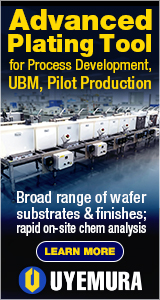|

|
|
| Ask the Experts | |||||||
|
|||||||
|
December 8, 2025 - Updated April 18, 2018 - Originally Posted How to Detect Counterfeit Components?I'm exploring issues with counterfeit components and would like to know the best technologies available to detect counterfeit devices. Can X-ray or other inspection solutions detect counterfeit components? P.S. |
|||||||
| Expert Panel Responses | |||||||
|
I would suggest X-RAY and FTIR on the molded plastic to compare to a mold material. This will tell if the plastic is different. X-Ray will tell if there is wire bonds and if the IC is present.
President/Senior Technical Consultant Foresite Mr. Munson, President and Founder of Foresite, has extensive electronics industry experience applying Ion Chromatography analytical techniques to a wide spectrum of manufacturing applications.
A visual check will work much better when you look for the following:
Senior Manufacturing Engineer Northrop Grumman Edithel is a chemical engineer with 20 year experience in manufacturing & process development for electronic contract manufacturers in US as well as some major OEM's. Involved in SMT, Reflow, Wave and other assembly operations entailing conformal coating and robotics.
Many of my customers ask me about a counterfeit components risk mitigation testing strategy. Typically, there are several industry testing methods referred to ; IDEA, CCAP, QTSL, SAE AS6081/6171, along with DLA testing methods. Each of these has a list of tests required along with equipment required to utilize to comply. Only the SAE6171 references a confidence calculation across testing performed. Once you review some of these you will see descriptions around External Visual Inspection, Resistance to Solvents(RTS), Radiological Inspection(X-ray), XRF, Delid/Decapsulation Internal Inspection, Remarking /Resurfacing Inspection , SEM/EDX, CSAM, Hermeticity, Electrical Testing, etc. Your specific inspection below only utilizing X-ray and may detect lead frame differences as a example which could indicate a suspect counterfeit device. But, my recommendation is to review methodologies listed above and decide ( e.g., SAE AS6171) to utilize a combined testing methods inspection technique. But, a reminder that none of these methods individually or combined is perfect. Hence you will have to assess testing involved, cost required, and most of all what's your acceptable risk to utilize.
Fellow Raytheon Mark has over 35 years of experience in electronics fabrication, quality, and reliability while working for Raytheon RMD, IEC Electronics, GE, Motorola, ORS, etc. He has most recently taken the role as a Fellow at Raytheon in Tucson, AZ; prior to that, he established IEC Electronics Analysis and Testing Laboratories (IATL), LLC in Albuquerque, NM, for electronics and material analysis testing in the military, medical, and industrial industries. His expertise includes PCB, PCBA, components, and analytical and electrical analysis techniques.
The best approach? Don't buy from brokers. Buying from direct or from authorized resellers reduces counterfeit risk by 99.99%. Why would you do anything else?
CEO & Managing Partner DfR Solutions Dr. Hillman's specialties include best practices in Design for Reliability, strategies for transitioning to Pb-free, supplier qualification, passive component technology and printed board failure mechanisms.
There are a few powerful inspection techniques you need to deploy to effectively detect counterfeit components. I'm not going to cover supplier qualification and audits, things you need to do prior to acquiring components from anyone. From an inspection perspective, here are some of the techniques you need to have:
CEO Creative Electron Founder and CEO of Creative Electron, the largest US manufacturer of x-ray machines for the electronics industry, Dr. Cardoso has over 20 years of experience in x-ray inspection. He's a frequent speaker at technical conferences, has over 120 published papers, and owns several patents in the field.
X Ray Imaging can be used to inspect & verify lead frame integrity of electronic components. X Ray Fluorescence can provide analytical fingerprint to verify manufacturing source of component package.
Global Sales Director Photonis USA Mr. Greenland has 20 years electronics industry experience ranging from circuit board design to product support & repair services. Peter has spent the last 4 years at Pycon Inc. supporting customers that require high mix, low volume manufacturing solutions.
Reader Comment
|
|||||||
| Submit A Comment | |||||||
|
Comments are reviewed prior to posting. You must include your full name to have your comments posted. We will not post your email address. |
|
Free Newsletter Subscription
Circuitnet is built for professionals who bear the responsibility of looking ahead, imagining the future, and preparing for it. Insert Your Email Address |
|

|








